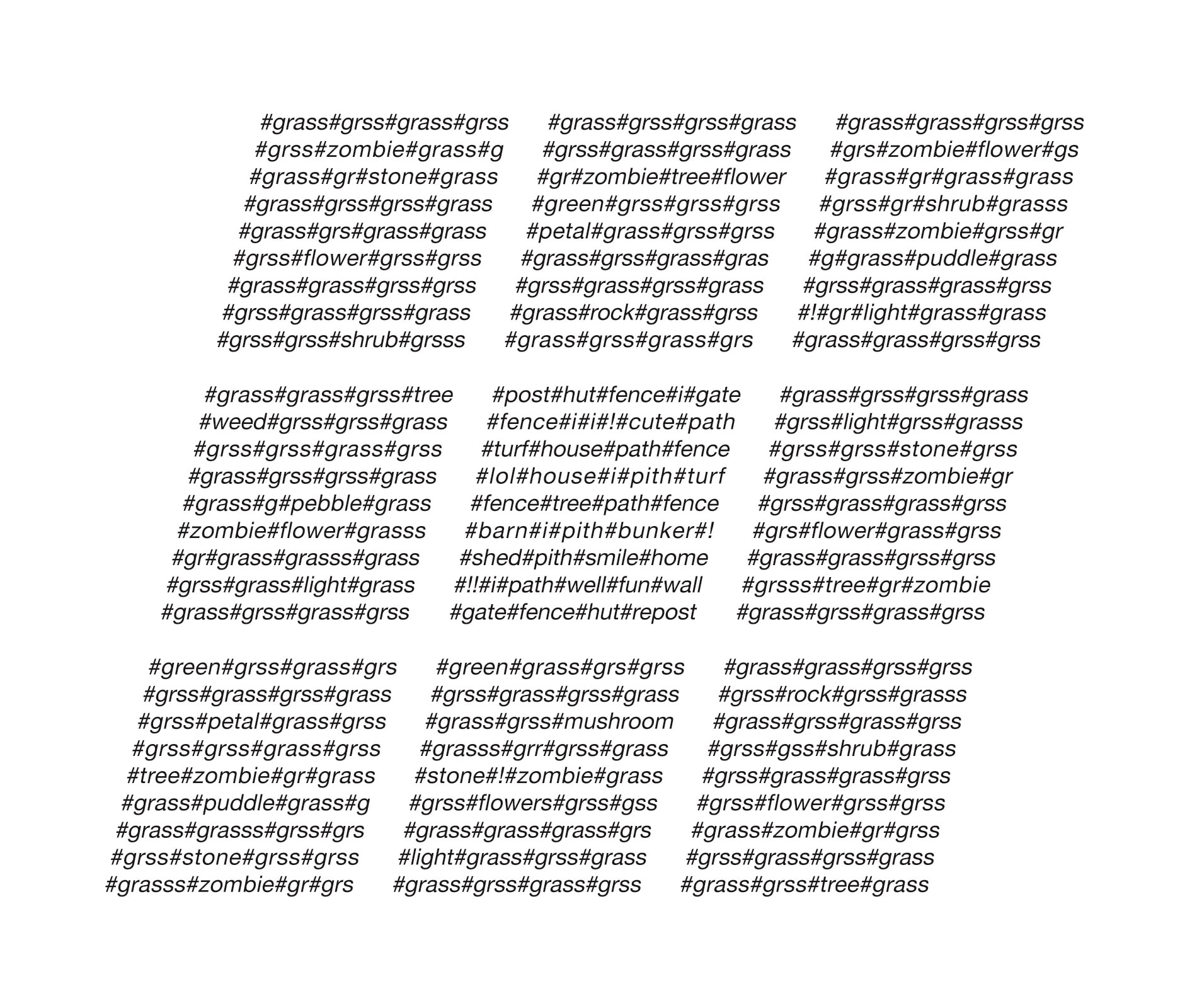You remember the octothorpe, don’t you? This plucky little mark evolved from the Roman abbreviation lb for libra pondo, or pound weight, and into the barred medieval ‘℔’ before settling into its modern form of ‘#’. Along the way it picked up a cacophony of mostly reasonable nicknames: pound sign; number sign; hash sign; hex; grid; crunch; pig pen; square; tic-tac-toe.1,2 Sometime during the 1960s, however, it acquired another name — ‘octothorpe’ — that is unreasonable by design. The roots of that name lie in the hallowed corridors of Bell Labs, but today we’re interested in one of the false etymologies that cling to it like a bad smell:
In cartography, it is a traditional symbol for village: eight fields around a central square. That is the source of its name. Octothorp means eight fields.3
That’s how Robert Bringhurst, eminent author of The Elements of Typographic Style, put it in the 2008 edition of his reference book. It is, unfortunately, an etymology without merit. The suffix thorp(e) is an Old English word for village,4 still used in British place names such as Scunthorpe,* but octo is Greek; not a combination that readily occurs in the natural way of things.
It was this pleasing but erroneous explanation that caught the attention of poet Tom Comitta and artist George Pfau. I say “artist”, but George has a claim to being one of the world’s few professional zombie enthusiasts: he is a prolific producer of zombie-inspired art and has been interviewed about his fascination with the walking dead by FastCo.Exist,6 Motherboard7, and others. Together, George and Tom have synthesised zombies and octothorpes into a series of artworks called Eight Fields Surrounding a Village (Or a History of the Hashtag), of which you can see a part here:

I see what you did there.
Tom explained to me via email how the pair were inspired by the description and shape of the ‘#’ as an isolated village surrounded by fields:
George and I made a sequential visual poem called “Eight Fields Surrounding a Village,” turning this visual metaphor into a visual narrative of zombies swarming a village. In much of our work, we bring together my practice of visual poetry with George’s practice of exploring and inverting society’s use of “zombie.” When we discovered the history of the octothorpe as you described it, we couldn’t help but see the almost cliché story of a rural zombie takeover. If you look closely at each panel from left to right, you’ll see a sequential narrative that goes from #peace to #zombieapocalypse.
And so you will! The image above is just one panel of four; the #zombieplague is taking hold but is not yet pathological. You can see the complete work, along with more of George and Tom’s zombie-related art, at Cold Front magazine.†
Many thanks to Tom and George for getting in touch!
- 1.
-
Fulford, Robert. “How Twitter Saved the Octothorpe”. National Post.
- 2.
-
“Green Book”. In. International Telecommunication Union, 1973.
- 3.
-
Bringhurst, Robert. “Octothorpe”. In The Elements of Typographic Style : Version 3.2, 314+. Hartley and Marks, Publishers, 2008.
- 4.
-
“Thorp”. Oxford University Press, May 2011.
- 5.
-
Sheerin, Jude. “How Spam Filters Dictated Canadian magazine’s Fate”. BBC News.
- 6.
-
Peters, Adele. “Romero Meets Monet: Oil Paintings Of The Zombie Apocalypse”. FastCo.Exist.
- 7.
-
Merchant, Brian. “Impressionist Paintings of Famous Zombie Films: The Apocalypse, Abstracted”. Motherboard.
- *
- Tangentially, the town of Scunthorpe is the originator of the so-called Scunthorpe problem.5 ↢
- †
- If this isn’t your cup of tea, you might be interested in Tom and George’s iOS app BlabberLab, in which dismembered body parts — another zombie trope — are combined with letters to make, as Tom puts it, “a set of 400+ grotesque rebuses, which folks can now use to make colorful visual poems, encrypted messages and collages.” You can download the app for free from iTunes. ↢
Comment posted by Jamsheed on
I love zombies (well, zombie films anyway—wouldn’t exactly want to be spending time with zombies or any such!) and I love visual poetry, so at least in this case: two cheers for false etymologies!
Comment posted by Keith Houston on
Hi Jamsheed — thanks for the comment! It’s just such an appealing false etymology, isn’t it? Google Books doesn’t have any convincing references earlier than the first edition of Bringhurst’s book, so I have no idea where it came from.
Comment posted by Jamsheed on
It is extremely imaginative. I imagine that the people who can look at a hash and imagine a village are sort of like the people could look at a bunch of stars and imagine bears and hunters in the sky. It’s impressive! I am of course miserably bad at this sort of thing.
Comment posted by Keith Houston on
As am I. Like you, I’m glad there are other people out there to do it!